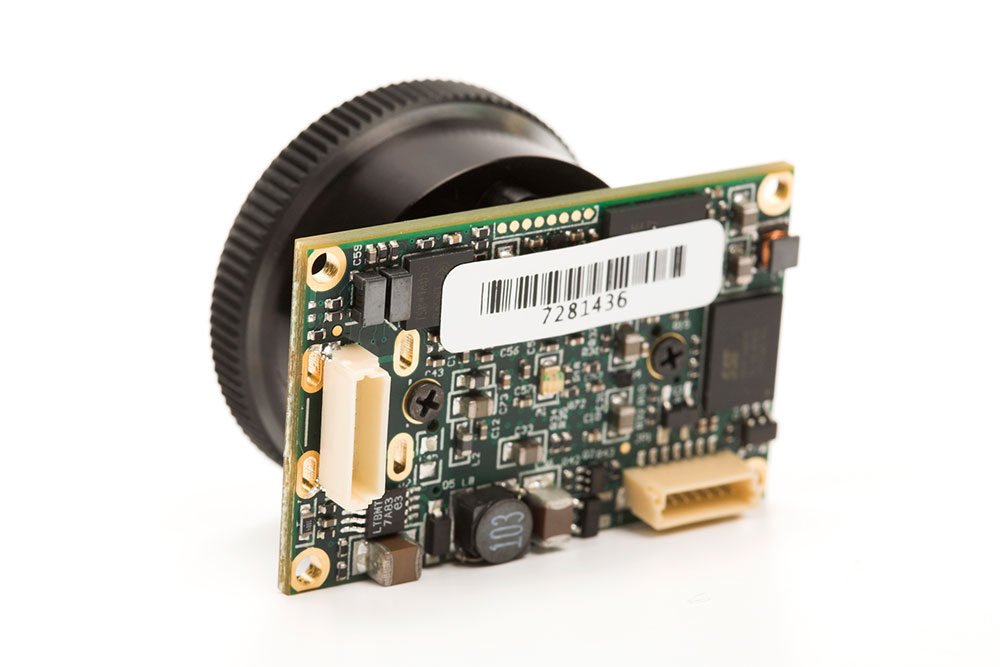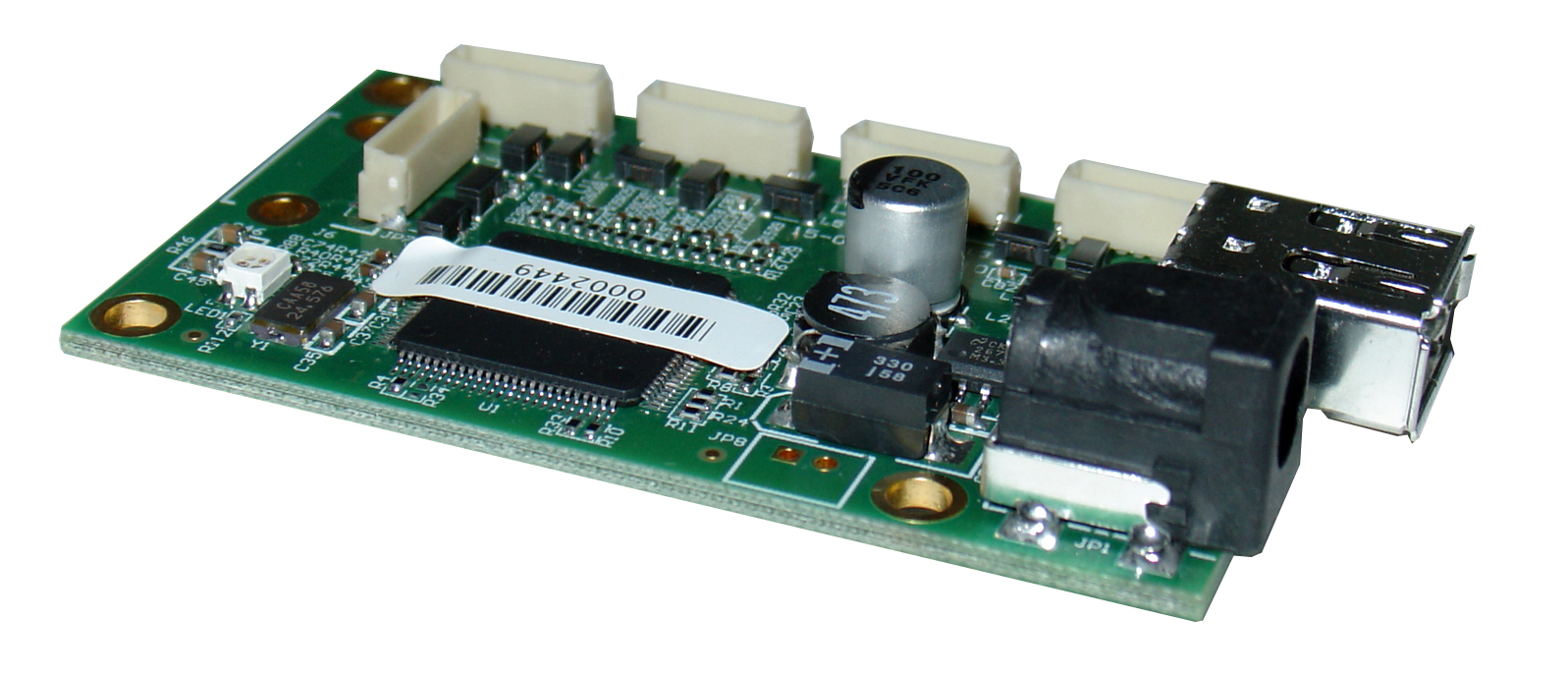Creating a board-level multiple FireWire camera array for OEM applications
Download PDF - Board-Level-Array
Intended Audience
This Technical Application Note is intended for original equipment manufacturers (OEMs) of high volume vision systems. Some of the FLIR products described within, such as the Firefly MV camera with miniature 1394 connector and the 6-port board-level hub, are available to qualified OEM’s only. Some minimum order quantity (MOQ) and lead time restrictions may also apply. Contact FLIR Machine Vision Sales for additional information.
Overview
Many high-speed, compact vision systems, such as 3D scanners, object and gesture tracking systems, and multi-touch displays, have the following imaging requirements:
- Multiple cameras must acquire and stream images simultaneously from different viewpoints;
- Synchronized image acquisition from multiple cameras, either automatically in free-running mode, or by using an external trigger; and
- The cameras and supporting components must fit in a tight space, be placed in a unique position, or mounted within a custom enclosure.
This document provides the following information:
- An overview of some of the benefits of FireWire and why it is an ideal interface technology for small, multiple camera systems;
- How FLIR products can be used to meet some of the above requirements;
- Some of the technical factors that vision system designers should be aware of when designing with FLIR products; and
- An example system configuration.
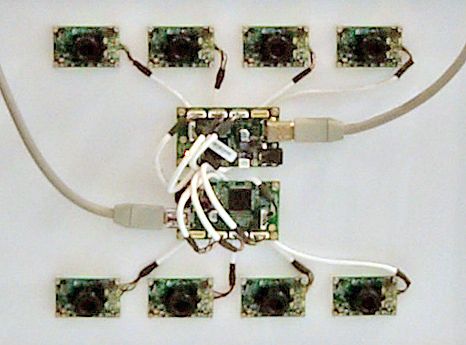
Figure 1: Demonstration of a board-level multiple camera array
Multiple Camera Support
Selecting a Digital Interface
There are several things to consider when deciding on the interface technology for a multi-camera system, including total throughput, quality of service, latency, and overall system complexity and cost.
FireWire has guaranteed, isochronous bandwidth that is allocated every 125 µs for data that can be termed "latency-critical." This allows for low-latency data distribution and enables the latency of that data to be deterministic, making the interface technology ideal for operating multiple cameras on the same network. FireWire also allows for much smaller camera designs, like those of many analog cameras, and a single cable can provide both power and data. This maximizes ease-of-use and reliability of the system, and enables compact multiple camera imaging systems to be created with minimal cabling.
The FLIR Firefly MV uses an IEEE 1394a interface, which provides data throughput of 400 Mbits/s.
Multiple FireWire-Based Camera Arrays
There are many factors that should be taken into account when designing a large array of FireWire cameras. These include physical elements such as hubs, cables and host PCs, as well as other aspects such as image acquisition software.
For a detailed examination of the various factors to take into consideration when designing and implementing a multiple camera array, see Factors to Consider When Designing a Multiple Camera Array.
Image Acquisition Synchronization
All FLIR 1394a and 1394b cameras, including the Firefly MV, support image acquisition synchronization. When in free running mode, the cameras are automatically synced to within 125μs at the hardware level. This is a feature of the cameras themselves, and is independent of the host system, camera drivers or software. Synchronization can also be achieved by triggering all cameras at the same time, either by an external trigger or by an asynchronous software trigger.
FLIR’s MultiSync software can also be used to perform automatic synchronization of cameras across buses. The software is also capable of synchronizing cameras across multiple PCs using a dedicated IEEE1394 timing bus. See Synchronizing image acquisition of multiple FW PGR cameras for more information.
Board-level Products
The term “board-level” refers to a product that does not have a case or protective enclosure that houses the printed circuit board (PCB). This is often necessary to minimize space requirements or to allow the camera to be mounted within a custom enclosure. Board-level versions of the Firefly MV, Dragonfly2, and Dragonfly Express are available for OEM applications.
|
|
Electrostatic discharge (ESD) precautions should be taken when working with or handling board-level products. Users who have purchased a bare board camera should either handle it bare handed or use non-chargeable gloves, clothes or material. Users should also use conductive shoes, and should install a conductive mat on the floor or working table to prevent the generation of static electricity. |
|
|
Some FLIR board-level products are not FCC or CE certified. Emissions compliance certification of these products are the responsibility of the system manufacturer. |
Example System
FLIR has successfully demonstrated an array of eight Firefly MV IEEE 1394a cameras, a custom FLIR 6-port board-level 1394a hub, and third-party custom cables. FLIR does not endorse any of the third-party products mentioned or account for their performance in your particular setup.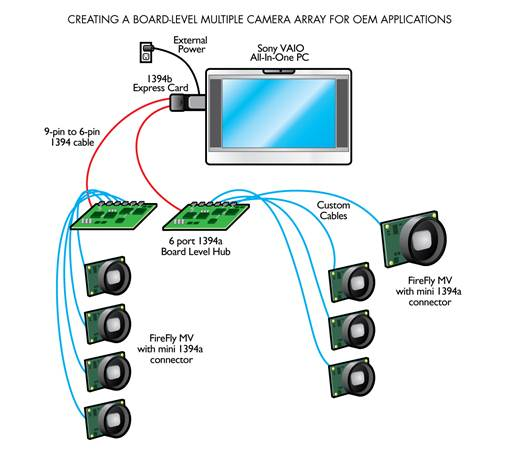
Figure 2: System diagram for board-level multiple camera array
|
Component |
Product |
|
Computer |
Sony VAIO All-in-One PC, model VGCLT33CE |
|
Operating System |
Windows XP Service Pack 1 |
|
Cameras |
FLIR OEM board-level Firefly MV camera with mini connector Part numbers: 97-00100-06900 (mono), 97-00100-07300 (color) |
|
Camera Operation Settings |
Image format: Format_7 Mode1 (2 x 2 pixel binning), Mono8 pixel encoding |
|
Hubs |
FLIR OEM board-level 6-port hub with mini connectors |
|
Interface Card |
FLIR 1394b 800 Mb/s 2-port ExpressCard (FWB-EC-2PORT) |
|
Interface Card Power Supply |
FLIR 12 V 1.25 A wall mount power supply (ACC-01-9003) |
|
Software and Drivers |
FLIR FlyCapture SDK with FirePRO interface card driver |
|
Cables (Card to Hubs) |
FLIR 6-pin to 9-pin 4.5 m 1394 cables |
|
Cables (Hubs to Cameras) |
8-inch custom cables, 8-pin JST to 8-pin JST |
|
Optics |
6 mm M12 microlens |
Note: Some ordering restrictions and minimum quantities apply.
Imaging Components
Firefly MV with Miniature 1394a Connector
The Firefly MV can be fitted with a miniature 8-pin vertical connector in place of the standard 6-pin right-angle (vertical) 1394a connector. This model, available to qualified OEM’s only, is designed to minimize the amount of space required at the rear of the Firefly MV.
|
Camera Specifications:
|
|
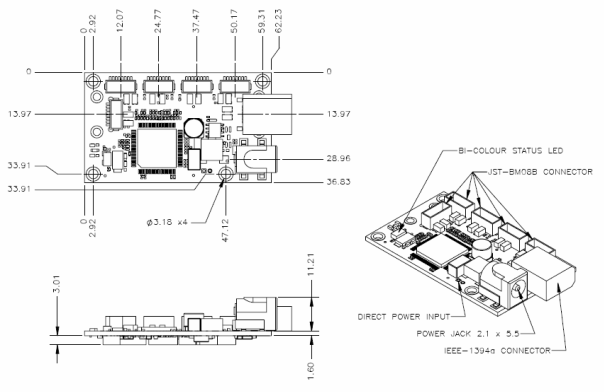
Figure 3: Firefly MV PCB dimensions
6-Port Hub with Miniature 1394a Connectors
Hubs can help to extend the distance of FLIR cameras, reduce the number of cables arriving at the host PC by consolidating connections, and provide additional power over the FireWire cable to connected cameras. The 6-port hub supports up to 5 incoming connections which then can be reduced to a single cable to the interface card on the PC (note that the total amount of data that can be transferred is still limited by the 1394 bus). Two hubs can also be daisy-chained together to support an 8-camera array off one 1394a host adapter card (requires external power to be applied).
|
Hub Specifications:
|
|
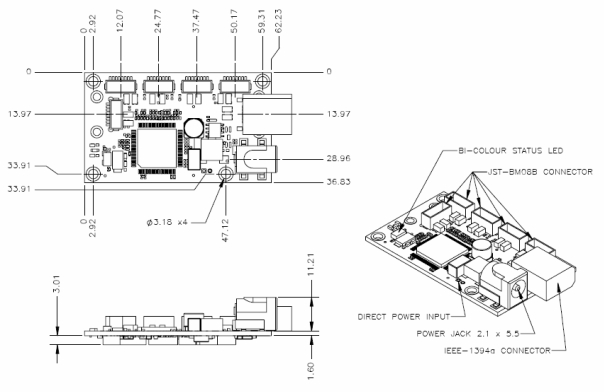
Figure 4: 6-port hub dimensions
IEEE 1394b ExpressCard
The Firefly MV 1394a camera is fully compatible with the 1394b ExpressCard. The only issues that users should be aware of are:
- Each camera consumes approximately 1 W of power. An external power supply must be connected to the ExpressCard to provide power to the cameras.
- The physical interface between 1394a and 1394b is significantly different. To connect the ExpressCard to the 6-port hub’s 6-pin 1394a connector requires a cable with a 1394a 6-pin connector on one end and a 1394b 9-pin connector on the other. These cables can be purchased from FLIR.
- Using a 1394b interface card will not improve the camera's ability to transmit data. In other words, users will not be able to achieve higher resolutions and faster frame rates with their 1394a camera.
- The number of cameras that can be used to stream images continuously is limited by the IEEE 1394 chipset used. The LSI (Agere) chipset used in the FLIR ExpressCard is able to support 8 simultaneous DMA contexts. This means that 8 cameras are able to stream at any given time.
Custom Cables
FLIR does not provide the cables required to connect the 6-port hub to the Firefly MV. These are left to the OEM to source themselves. Newnex is one company that provides these cables. A wiring diagram is shown in the figure below.
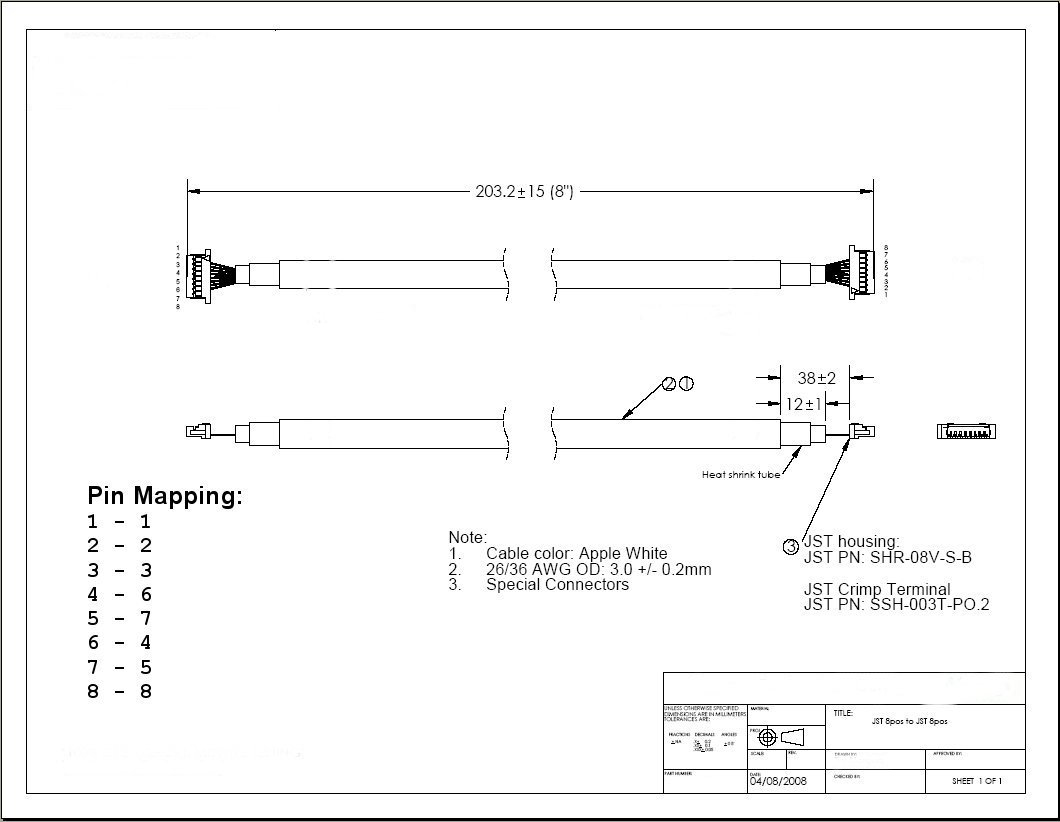
Figure 5: Wiring diagram for cable connecting 6-port hub to Firefly MV

